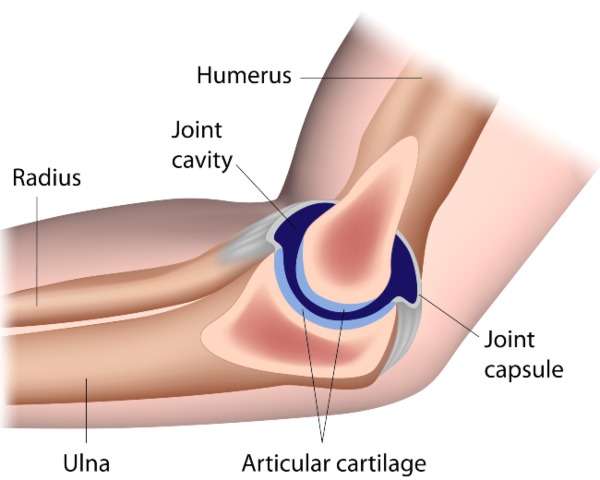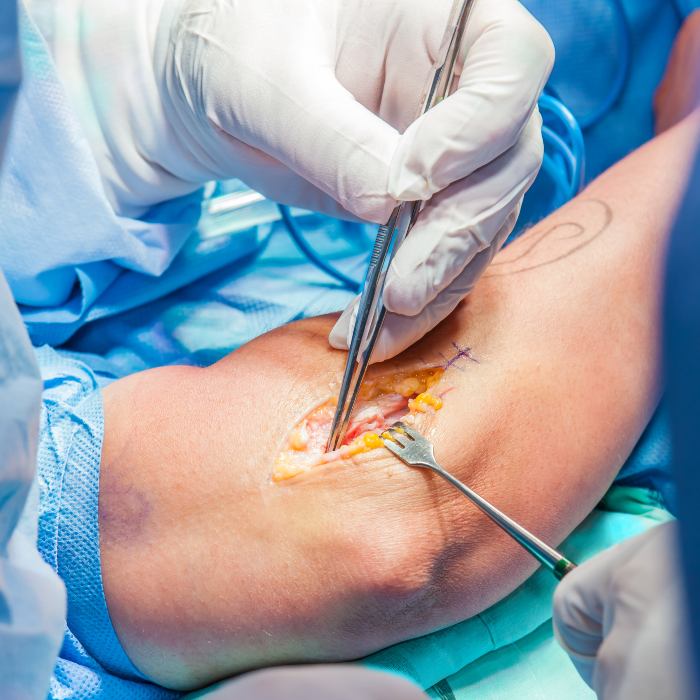ELBOW ARTHRITIS TREATMENT MELBOURNE
Dr Christopher Pullen

ELBOW JOINT ANATOMY
The anatomy and function of the elbow joint
The elbow is a complex hinge joint that consists of three separate joints. Different articulations of the elbow joint (the ulnohumeral joint, the radiocapitellar joint, and the proximal radioulnar joint) allow for a wide range of movements of the forearm and hand.
Many of the muscles of both the lower and upper arm either cross or attach to at least one component of the elbow joint.
The elbow joint is made up of three bones, (1) the humerus, (2) ulna, and (3) radius. It is surrounded by a watertight sac called the joint capsule (which is filled with lubricating fluid).
Elbow arthritis can cause pain and stiffness and can become disabling in severe cases, making it difficult to perform everyday activities.
Elbow Joint Anatomy


Figure 1
ELBOW ARTHRITIS SURGERY
Dr Pullen may recommend surgery if your elbow is not responding to nonsurgical treatments.
Surgical approaches may include arthroscopic procedures, total elbow replacement and soft-tissue reconstruction of tendons, ligaments and muscles.
Dr Pullen will discuss the options with you and any risks associated with each of the following procedures:
Arthroscopic Techniques to Treat Elbow Arthritis
Arthroscopic techniques use an arthroscope (a medical instrument that has a tiny camera lens and light that allows Dr Pullen to see the bones, joints and soft tissues in the elbow).
Dr Pullen may use the arthroscopic instruments to repair, reconstruct and remove structures of the elbow through very small incision/s. Arthroscopic techniques allow for less pain and scarring and faster recovery times.


Total Elbow Replacement
In a total elbow replacement, the parts of the elbow are replaced with artificial parts called prosthesis. Elbow replacement surgery can be very complicated and is performed in two ways: “linked” and “unlinked.”
Linked – The “linked” method places an artificial stem inside the humerus. Another stem is inserted into the ulna. Surgeons then connect the two stems with a hinge to allow for better function and range of motion.
Unlinked – The “unlinked” method can be used for individuals who have healthier soft tissues in the elbow. An “unlinked” elbow replacement does not require a hinge because the two stems are held together with ligaments, tendons and muscles that are in good condition.
The most appropriate surgical approach for you will depend on a range of factors including the scope of your injury, your general health, and your personal needs.
POTENTIAL COMPLICATIONS
The risks and complications of elbow arthritis surgery include:
- Elbow stiffness and restricted movement
- Infection
- Numbness or tingling around the elbow and forearm
- Persistent elbow and forearm pain.
Dr Pullen will discuss with you in detail the potential complications and risks in relation to your surgery.
Proud member of Royal Australasian College of Surgeons and Australian Orthopaedic Association.




Elbow Arthritis Surgery Melbourne
Dr Pullen treats patients from all over Victoria in relation to elbow arthritis. He consults with patients at the following practice locations in Melbourne including East Melbourne and Ringwood.


